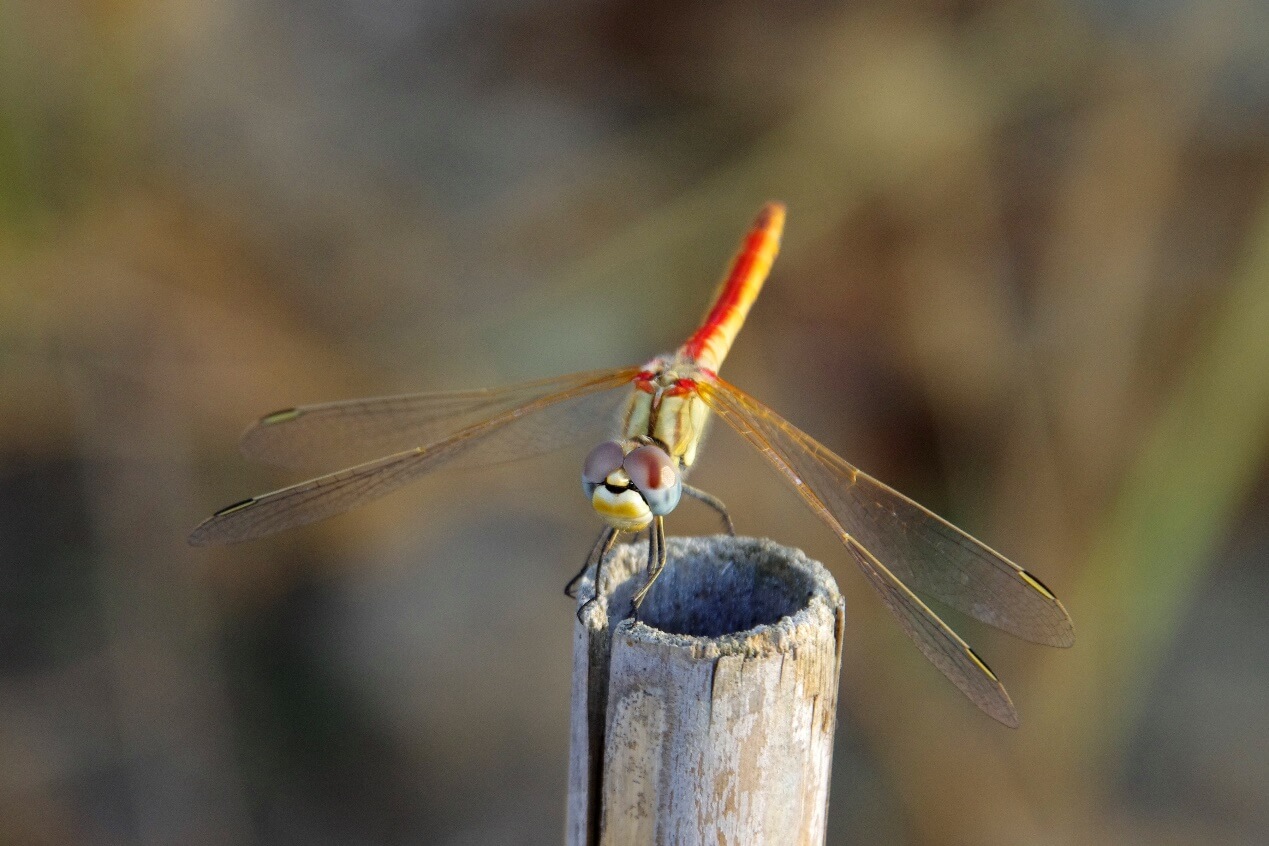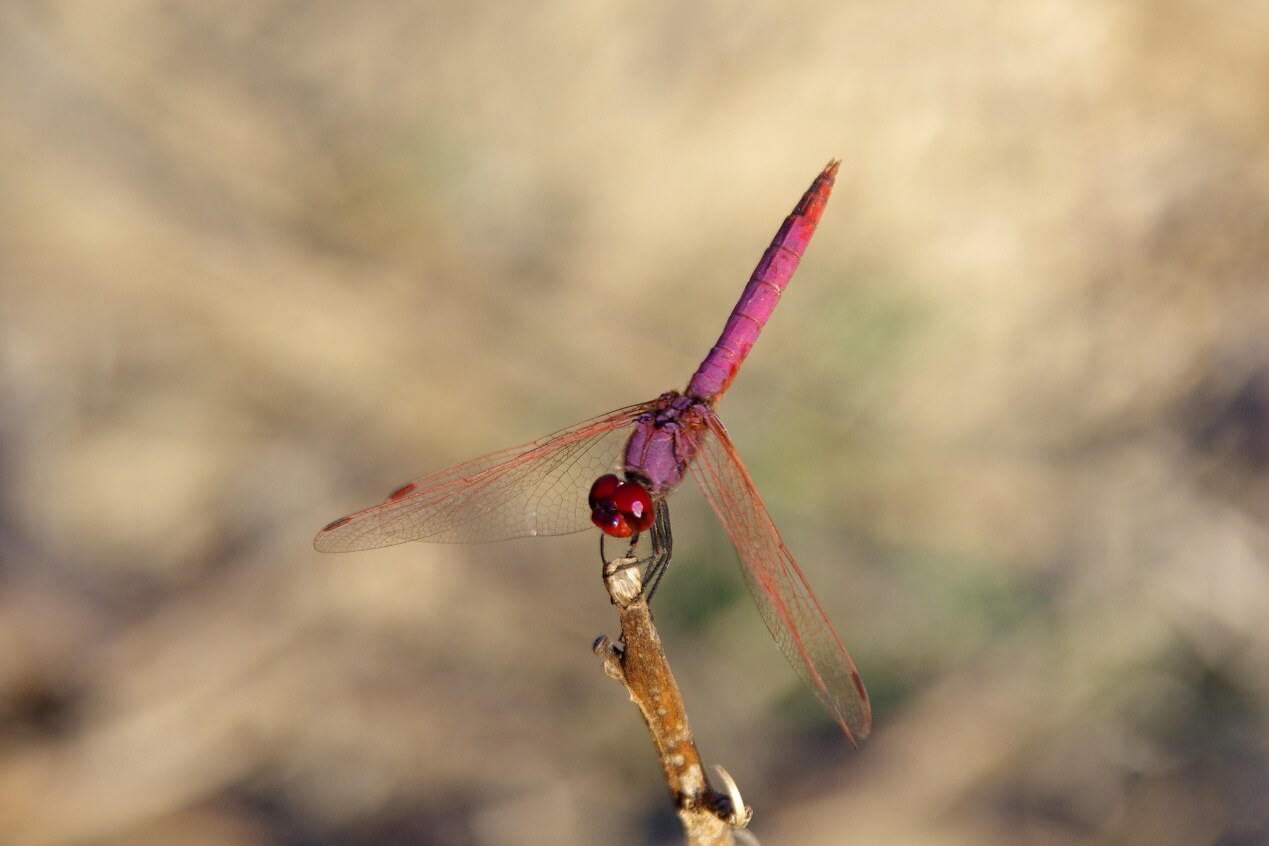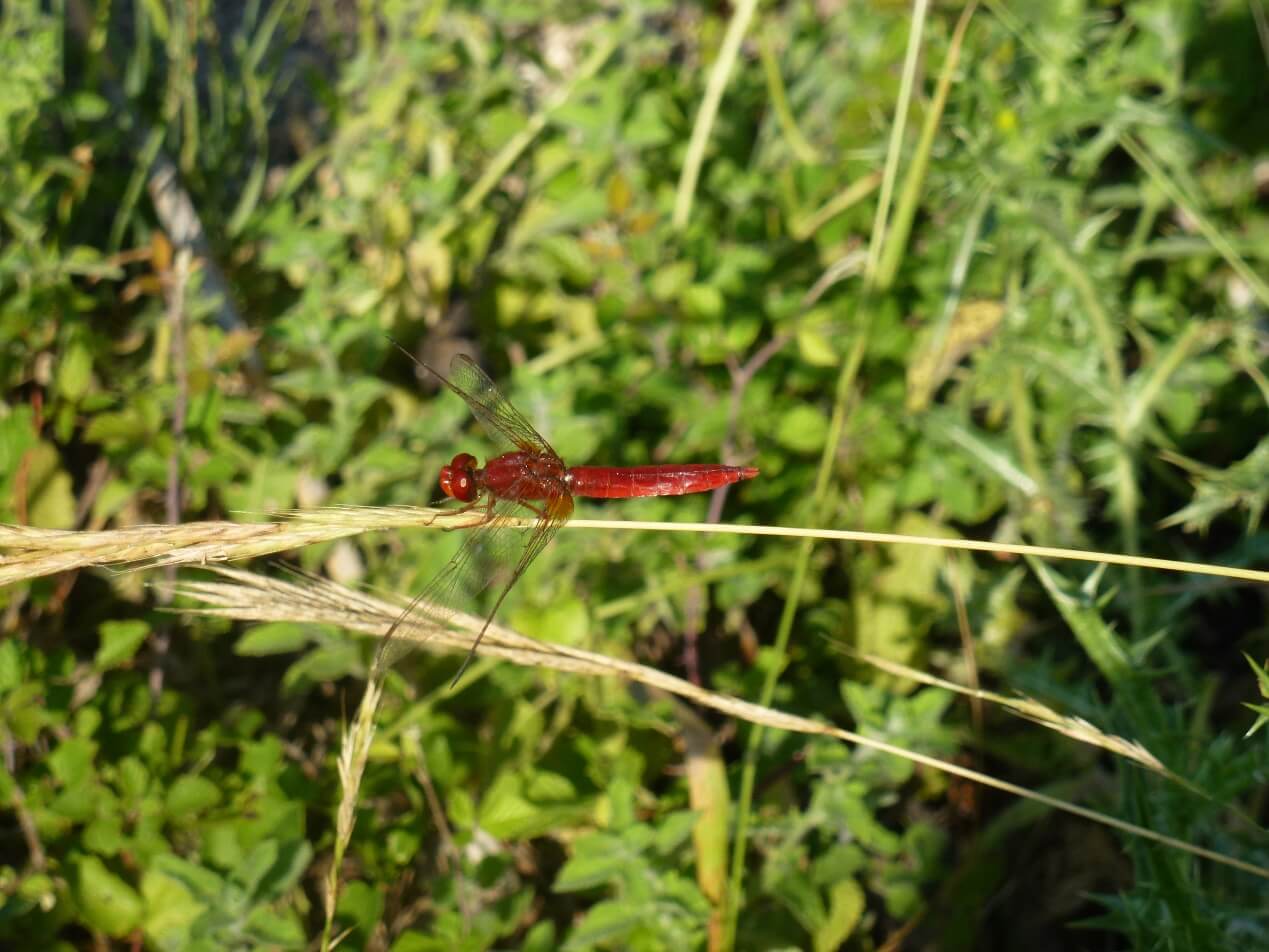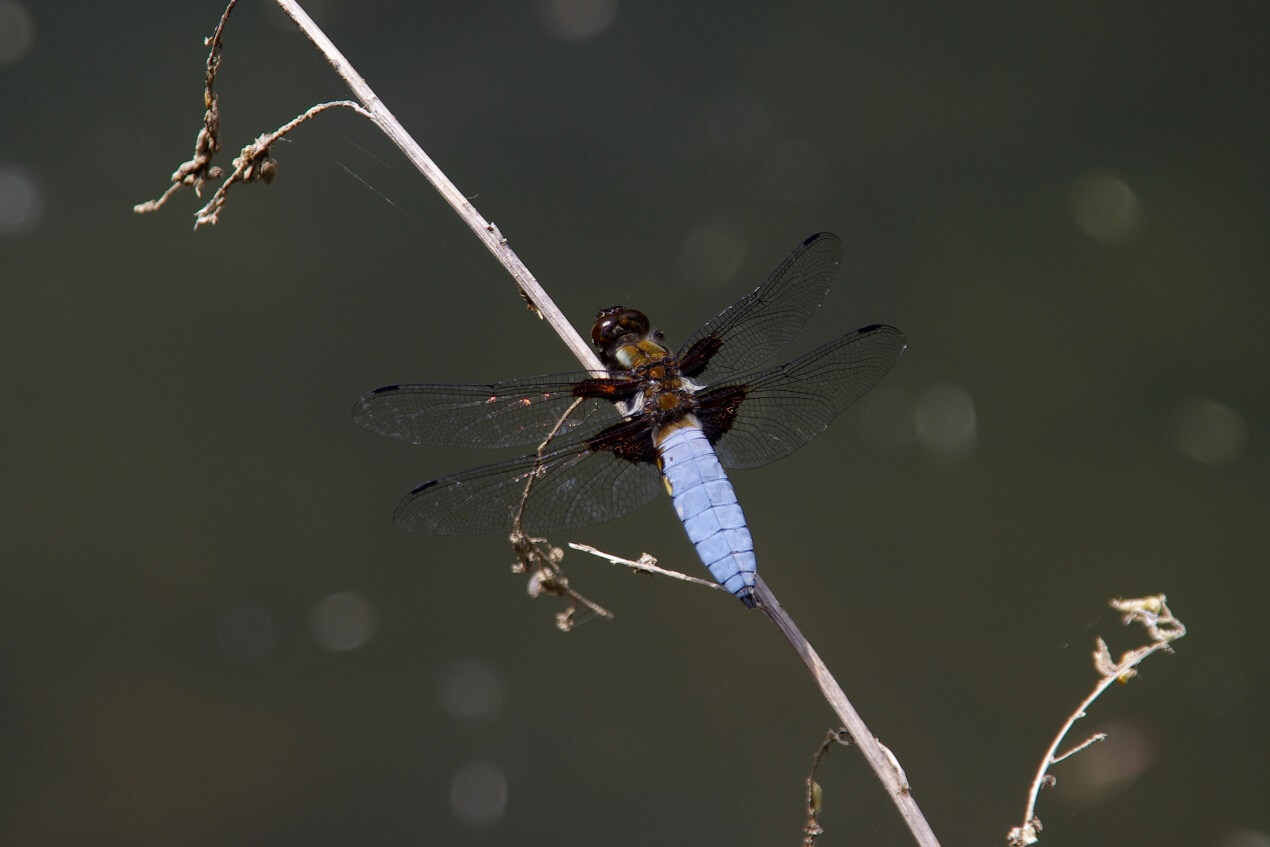
Odonata insect order (Fig. 1) has an unusually long and rich fossil record; fossils testify that their history begins at least 300 million years ago. Odonates are among the few insects that have secured a major place in folklore and art and have become popular in contrast with the majority of other insect orders. The etymology of the word Odonata derives from the words odontas & jaw, to emphasize the existence of strong "teeth" in the jaws of most species. Today they are spread in all continents with the exception of Polar Regions and areas covered all year round by ice and snow. "Dragonflies" are a small group of insects counting about 6000 species; however, the discovery of new species is not an uncommon fact especially in Europe. The Latin name "Libellula", which means water level, was given in 1552 by Gulielmus Rondeletius because of the similarity of the nymph shape with a fish called the same and its preference for humid environments (Alygizakis 2015).
In Greece there are at least 69 Odonata species subdivided into suborder Zygoptera (damselflies) of smaller size, with similar pairs of wings which can fold along their body and suborder Anisoptera (dragonflies) of larger size with larger second pair of unfold wings. Small species have a length of up to 35 mm and a wingspan of up to 4 cm, while larger species have a length of up to 86 mm and a wingspan of up to 12 cm. The body is elongated, with the abdomen in some cases corresponding to 80% of the total body length. In the short chest there are attached two pairs of membranous wings and three pairs of legs, while the head is elongated along with the transverse axis of the rest of the body; they have a pair of very large eyes and a pair of very small antennas. Odonata species either are single colored like green, blue, brown or red (Trithemis annulata sp.) (Fig. 2) or with transverse or elongated patterns of bands and spots of various colors (yellow, red, blue, brown) alternate with black. They live in shallow freshwater habitats, such as meadows, rivers and streams, lakes, (Fig. 3) and wetlands as prolarvae and larvae; their development occurs in water prior to their emergence. They are carnivorous species feeding on insects they prey, while nymphs also feed on small fish and amphibians. In particular suborder Anisoptera which move alternately their two pairs of wings with a frequency of up to 30 "hits" per second achieving speeds of up to 50 km/h, are excellent fly predators (Alygizakis 2015).

Their developmental stages are of great interest as their nymphs are wingless and aquatic, in contrast to the terrestrial adults. While these insects are perfectly adapted to the environment, they represent very sensitive populations to sudden environmental changes and are used as bio-indicators for the contamination of aquatic areas by human intervention. Odonata spawning takes place in aquatic environments, in or very near water; the egg-deposition of Odonates may be accomplished in three distinct ways of spawning: the endophytic, the epiphytic and the exophytic way. In the first case (endophytic spawning), the eggs are introduced into aquatic plants leaves or stems using their well-developed cutting ovipositor; in case of exophytic spawning, eggs are laid or deposited in water, onto banks or muddy environments. In case of epiphytic spawning, eggs get attached to the surface of aquatic plants. Eggs are laid in batches, in sequence, one egg after another. Endophytic egg deposition tends to be limited to a few hundreds of eggs per day or even less, while exophytic deposition may include several thousands of eggs (Corbet 2002).

Eggs hatch may vary in time depending on the Superfamily and prevailing climate conditions during this stage; some Anisoptera species spend winter in a stage and develop in another stage during spring and early summer. The hatchlings develop through a series of stages, or instars, molting at the end of each instar into similar, but larger and more developed versions of themselves. At the early stage the insect emerges from the membranous shell of its egg, revealing the new exoskeleton. As the nymph is entirely aquatic, it differs significantly to its adult version, both in form and behavior. Wings have not yet been formed as they are useless in a wet environment and nothing in its structure foretells their subsequent development (Corbet 2002).
In particular, as the nymph evolves gradually through successive stage releases, it grows in size without any particular changes in its structure. The decisive changes come after the completion of half the stages and probably towards the last one, where the wings grow drastically in a very short time. The total number of singular stages may range from 8 to 18 and vary greatly in duration. According to the general rule that applies to Odonata nymph larvae and in most cases of insects, temperature is the main factor of acceleration growth, and tropical species generally develop in less time than those of colder climates. It has also been observed that some insects may choose to spend the last winter before adulthood in the final stages of development waiting for spring, which implies better weather conditions and higher temperatures (Corbet 2002).

Odonata do not have a pupal stage, although this terminology is used by some scientists instead of "nymph", but it is not widely accepted. What happens at the end of the nymph stage is that it stops feeding and her organs transform into those of a prosperous adult within larval skin. It climbs out of the water using a suitably robust support of vegetation and molts to disclose the adult (process of emergence). Until then, nymphs live and behave as aquatic insects (Corbet 2002).
During the last stage, if there are favored climatic conditions and the temperature is high enough, the largest dragonflies (Anisoptera) leave water until sunset and start to fly until next morning, while smaller species typically emerge during the day.
Usually for species of smaller size it takes more time and they emerge during the day. The newly emerged adult flies away from the area of its first flight where it spent hours, days or even a month, in order to search for food and complete its maturation. At the same time, characteristic colors become more distinct, and newly adults’ wings become distinctly brighter. During its lifetime the colors may change.
After the wings straighten and the body hardens, one of its first actions is to fly away from water and begins to feed, although a day or more may separate the first flight from the first meal. Once it has left the emergence site, the adult has few regular enemies. In flight adults are able to evade almost all predators except for extremely agile birds such as bee-eaters and falcons. Frogs are regular predators at egg-laying sites. During the prereproductive period the structure of the insect body reaches full growth; this stage takes from 2 to 8 weeks depending on species and environmental conditions. In case this period coincides with cold weather or temperatures, this period may last up to 9 months. When maturation stage of newly adults is over, Odonata insect is ready for the final stage of reproduction (Corbet 2002).

Reproduction (Fig. 5) begins with the concentration of males in an environment where water is the predominant element. Male insects take up positions either above the water or onto the banks waiting for the females (Corbet 2002). It has been suggested that some species of genus Sympetrum mate in the air as a tactic to minimize the risk of other competing males invading and attacking the female. Despite the fact that Odonata belong to the most studied groups in Greece, only species Platycnemis pennipes and Coenagrion scitulum are mentioned to be detected in Kefalonia according to older bibliography (Lopau & Wendler 1995). In recent studies of researcher Efthymiatou-Katsouni (2006) 13 Odonata representative species belonging to 6 different families were collected and identified, 12 of which were recorded in Kefalonia for the first time. Among these 12 species, Anax parthenope and Anax imperator spp. were recorded for the first time in the Ionian Sea. Maroulis & Xanthakis (2015) recorded 8 Odonata species belonging to three families and enriched the Odonata diversity recorded in Kefalonia with 4 more new taxa: Chalcolestes (Lestes) parvidens, Libellula depressa (Fig. 4), Orthetrum brunneum, and Orthetrum cancellatum.
Some of the Odonata species have been under a protection status at a national and European level. In our days, scientists still discover new Odonata species and for this reason there is not enough information either about species or their threats such as the use of insecticides and pesticides. However, the risk of environmental naturalness loss may be considered the most important threat through shrinkage, degradation and habitat fragmentation especially when ecotopes include the liquid element (rivers, streams, moors, lakes, etc.).
Odonata are often detected in Kefalonia during the summer. Visitors and inhabitants who visit a source of freshwater will surely meet Odonata constantly exhibiting their flying talent by intense unexpected movements. If lively dragonflies stop moving for a few moments by standing at the edge of a branch, their intense coloring body will pleasantly surprise the observers. However, dragonflies will immediately start again their flying acrobatics above the water surface in search for food; despite their beautiful and elegant appearance aquatic larvae and adult odonates are voracious predators.
We would like to thank Ms Eleni Maria Vaina for helping us in the indentification of the Odonata species recorded in Kefalonia and for her useful comments on Odonata ecology.
References
- Corbet PS (1999) Dragonflies: Behavior and Ecology of Odonata. Comstock Publishing Associates, Cornell University Press, Ithaca, New York
- Lopau W & Wendler A (1995) Arbeitsatlas zur Verbreitung der libellen in Griechenland und den umliegenden Gebieten - Naturkundliche Reiseberichte, 5, 1-108
- Alygizakis S (2015) Biology, Ecology and Evolution of insects of Order Odonata. Bachelor Thesis, Department of Agricultural Technologists, TEI Of Crete, pp 38-47
- Efthymiatou-Katsouni EN (2006) Contribution to the research on biodiversity of Kefalonia-Ithaca (Ionian Islands). Postgraduate Thesis, Department of Environmental & Natural Resources Management, Agrinio, p 323
- Maroulis Ch & Xanthakis M (2015) Contribution to the Recording of the Insect Fauna of Kefalonia. - Proceedings of the 17th PanHellenic Forestry Conference, Argostoli, Kefalonia, October 4-7
The above article was published in the magazine "The Kefalonian Progress" Period B, issue 19, July - September 2016
The photos come from the file photo archive of the Natural Environment and Climate Change Agency and the Wildlife Photographer Christos Maroulis that we warmly thank.